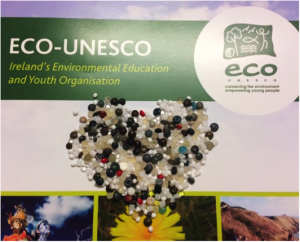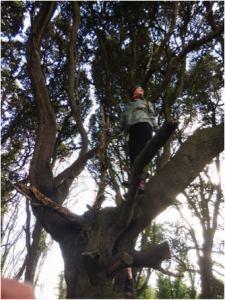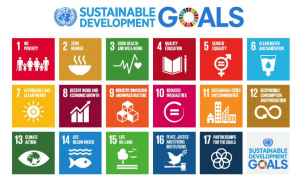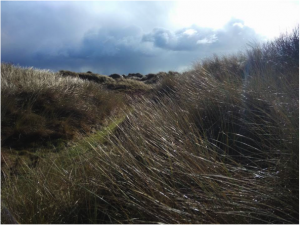Loving, Understanding, and Preserving our Planet

An impression of the ‘Education for Sustainable Development Youth Leadership Training’ in Dublin
 You probably know Ireland because of its Guinness, leprechauns, and never-ending rain. 25 young people from all over Europe travelled to this green country to attend a training session on Education for Sustainable Development (ESD) organized by ECO-UNESCO. I was one of them and I am excited to tell you about my experiences.
You probably know Ireland because of its Guinness, leprechauns, and never-ending rain. 25 young people from all over Europe travelled to this green country to attend a training session on Education for Sustainable Development (ESD) organized by ECO-UNESCO. I was one of them and I am excited to tell you about my experiences.
By Femke Lootens
 ECO-UNESCO is a partner of UNESCO’s Global Action Programme. UNESCO selected them to run the European version of a training that takes place on five different continents. The goal of this training was to educate young leaders in the three dimensions of ESD and to build confidence so that they can inspire and mobilize others for sustainability.
ECO-UNESCO is a partner of UNESCO’s Global Action Programme. UNESCO selected them to run the European version of a training that takes place on five different continents. The goal of this training was to educate young leaders in the three dimensions of ESD and to build confidence so that they can inspire and mobilize others for sustainability.
Three dimensions of ESD
According to UNESCO, ESD entails three dimensions: education in, for and about the environment. All three are equally important for different reasons.

We discovered the child in ourselves while visiting the North Bull Island nature reserve.
Big chance that as a child you were playing in the woods, going out for camping or wandering around in natural history museums. Research shows that contact with nature from a young age onwards leads to more consciousness about and care for the environment (Kollmuss and Agyeman 2002). And also when you are no child anymore you can still benefit from nature! We put this first principle into practice during the last day of the training.
[2] Education about the environment. Another dimension is teaching about the big challenges that lie ahead of us. Environmental problems are complex. Oftentimes, however, they are reduced into smaller parts, leading to end-of-pipe solutions. Chimneys are heightened instead of reducing the emissions, and wastewater is treated instead of replacing the chemicals in the production process. As a good doctor knows, it makes no sense to only cure the symptoms when you don’t take away the origin of the disease. That is why a system thinking approach is needed: you need see the whole context of a problem with all of its aspects and how these parts interrelate in order to give adequate solutions.
 During the training, we worked also with the Sustainable Development Goals (SDGs). The SDGs show the different dimensions of the UN sustainable development agenda. They are very much interconnected with each other. This proved itself during the SDG bingo game. The purpose of the game was to find for each SDG a person who was working on it. And indeed, we managed to find someone for each goal.
During the training, we worked also with the Sustainable Development Goals (SDGs). The SDGs show the different dimensions of the UN sustainable development agenda. They are very much interconnected with each other. This proved itself during the SDG bingo game. The purpose of the game was to find for each SDG a person who was working on it. And indeed, we managed to find someone for each goal.
The game and the course taught us as well that we need to tackle the SDGs together and look at the interlinkages between them. In addition, the SDGs demonstrate that as environmentalists, we should not solely be concerned about nature, but also about people being an integral part of their environment.
Participant Ben (medical sciences student involved in Medsin) during the system thinking session: “We moved from a framing of drowning polar bears to a much more urgent picture: it is also about the people that are already suffering from climate change because of health problems, food shortages and disasters. “
 [3] Education for the environment. After building love and understanding, the last dimension of ESD is about caring. We need to know what to do in order to keep this precious and complex system in balance. What is the impact of our lifestyle? How to enforce change? What society do we want to build? There is not one clear and right answer to these questions, but it is still of utmost importance to keep on asking ourselves.
[3] Education for the environment. After building love and understanding, the last dimension of ESD is about caring. We need to know what to do in order to keep this precious and complex system in balance. What is the impact of our lifestyle? How to enforce change? What society do we want to build? There is not one clear and right answer to these questions, but it is still of utmost importance to keep on asking ourselves.
Reloaded batteries
The training was very short and condensed. After three intensive days, our bodies were tired and our minds where enlightened. Even more important than learning about ESD was meeting passionate people from all sorts of backgrounds. Participant Maaike (youth leader JNM) after the training: “The session and the people created an atmosphere of hope. In a very short time, strong connections were made.”
I think most people felt the same way. I for one definitely found my drive and passion again. As was eloquently said during one of the presentations:
Never doubt that a small group of thoughtful, committed citizens can change the world. Indeed, it’s the only thing that ever has. (Margaret Mead)
References
Kollmuss, Anja, and Julian Agyeman. 2002. “Mind the Gap: Why Do People Act Environmentally and What Are the Barriers to pro-Environmental Behavior?” Environmental Education Research 8 (3): 239–60. doi:10.1080/13504620220145401.
